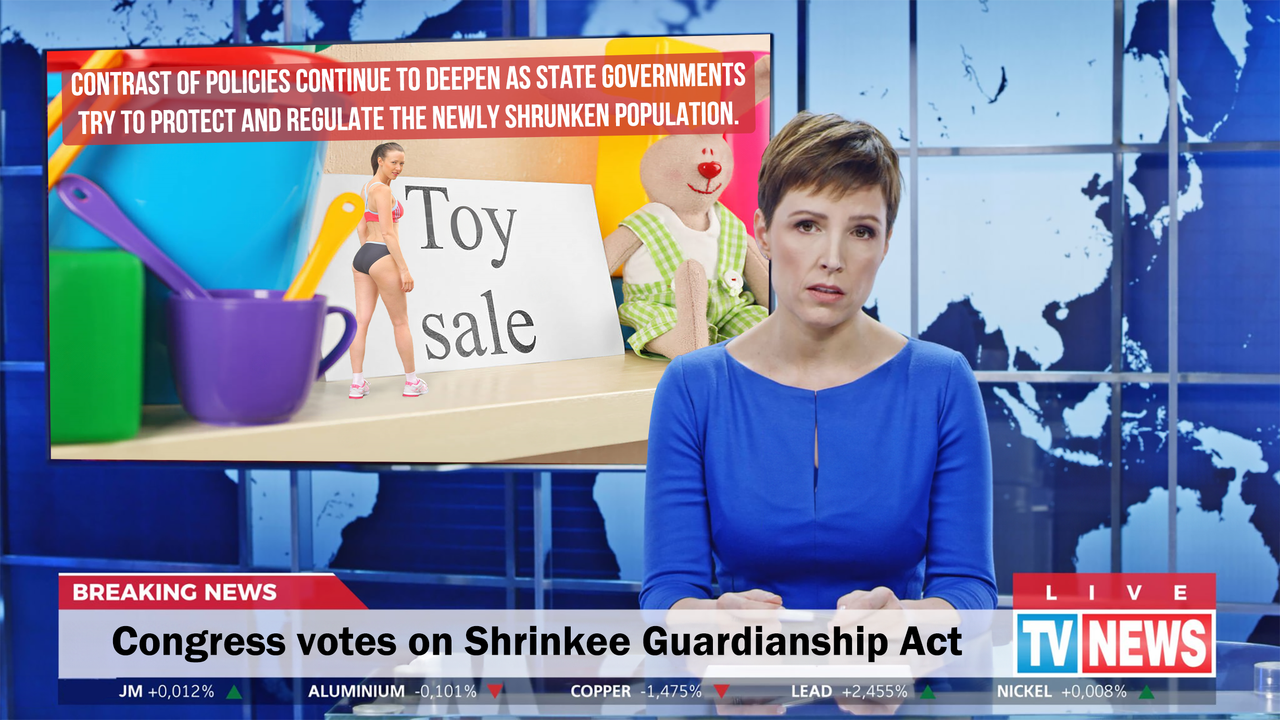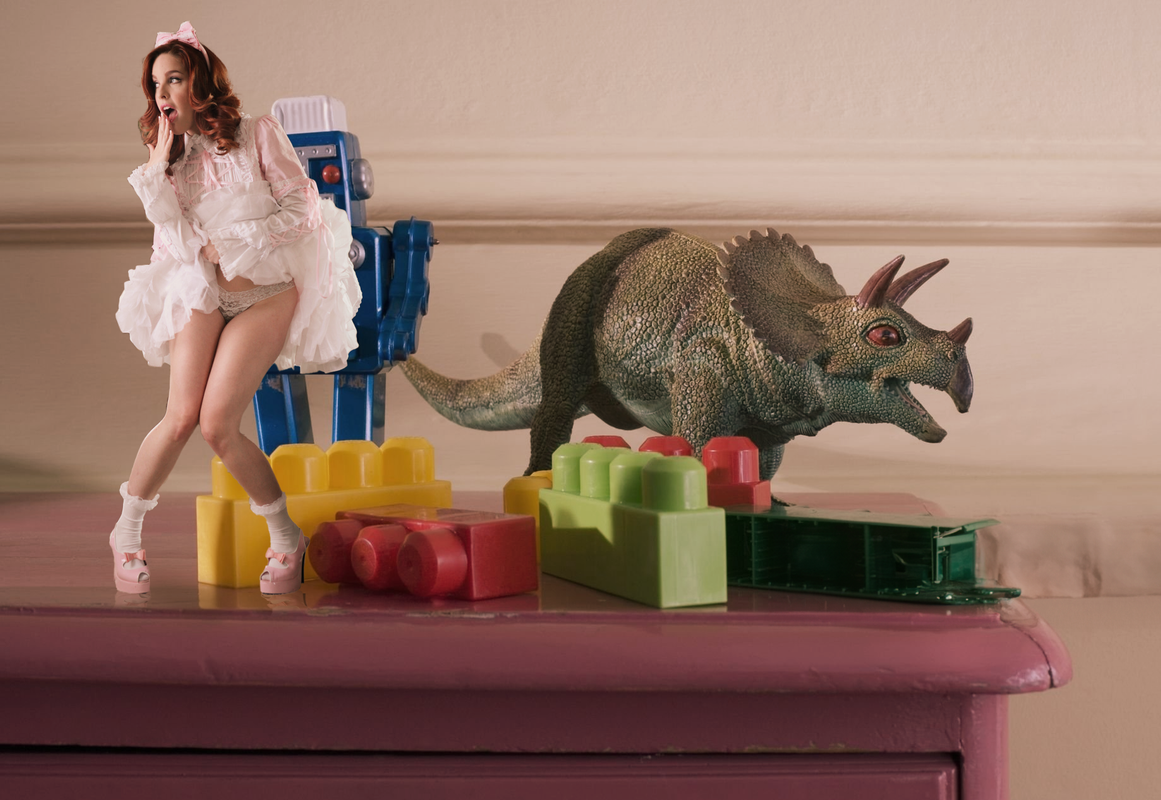
EVENING NEWS
*Good evening, I’m Sarah Caldwell, and tonight we bring you an in-depth report on ‘The Shroud Event,’ the cosmic phenomenon that continues to reshape our world, six months after it first struck. On that fateful Tuesday afternoon at precisely 2:03 PM Eastern Standard Time, mysterious spears of energy shot from the sky, crashing into Earth and triggering an event unlike anything we had ever seen before.*
*Scientists now believe these energy emissions originated from the collision of two distant nebulae, an occurrence so rare it’s been described as a once-in-a-billion-year event. The collision sent out quantum destabilizing particles that traveled across the cosmos, ultimately reaching our planet. These particles, invisible to the naked eye, interacted specifically with human DNA, causing millions of people to shrink. However, the particles only affected those who were outdoors or near windows—those who had the protection of solid structures were spared.*
*For those caught outside, the consequences were immediate and dramatic. Within hours, individuals found their height diminishing rapidly, some stopping at around half their size, while others were reduced to toddler height. A smaller, but significant, percentage of people shrank down to a few inches or even millimeters in size. The randomness of the shrinkage and its extreme outcomes have left scientists scrambling for answers, but for now, the world is adjusting to this surreal new reality.*
*The public’s attention was quickly drawn to high-profile cases, such as celebrities and athletes who were hit by the phenomenon. Pop star Jenna Reid, known for her extravagant performances, was reduced to seven inches while vacationing on a private beach. Hollywood heartthrob Max Donovan shrunk to doll size while playing golf. But perhaps the most widely publicized case was the Portland Trail Blazers basketball team. The entire team, which was practicing outdoors when the emissions hit, now stands at an average height of just two feet.*
*The Portland Trail Blazers have found a way to use their situation for good. They’ve been hosting televised charity events, and one in particular has captured the hearts of millions. During a game against a local youth basketball league, the team played on a court designed for children. In one viral clip, a five-year-old girl is seen giggling as she holds the basketball high above her head, far out of reach of a once 6’6” player, who leaps in vain to try and retrieve it. The clip has not only brought smiles but also highlighted the ongoing challenges faced by the shrunken population.*
*While stories like these bring some lighthearted moments to a difficult situation, the more serious question remains: how does society integrate millions of shrunken individuals into daily life? States across the country have taken drastically different approaches.*
*In California and New York, sweeping policies have been enacted to retrofit cities and public spaces to accommodate the shrunken population. Specially designed micro-housing, public transportation scaled for smaller individuals, and workplace accommodations have been implemented. However, these measures have faced considerable backlash due to the enormous cost to taxpayers. In New York City, the cost of modifying just a portion of the subway system to accommodate shrunken riders is projected to reach $15 billion. Critics argue that these initiatives place an undue financial burden on the public, with no clear path to long-term sustainability.*
*Other states, like Texas and Florida, have opted for a much different approach. In Texas, the Size-Based Guardianship Act has allowed in specific situation for children to assume legal guardianship over their shrunken parents. This has led to some truly shocking and, frankly, disturbing situations.*
*One example that has gained widespread attention is a seven-year-old boy named Tyler who went to live with his aunt after both of his parents shrank to a mere two inches in size. In a now-infamous video clip, Tyler proudly shows off to a reporter how he keeps his parents in a hamster cage. “This is where they live now,” he says, pointing to the cage filled with sawdust and a water bottle typically meant for small pets. Tyler goes on to demonstrate how he’s been “training” his parents to do tricks, such as running through tunnels and climbing up tiny ladders, all while insisting they call him ‘Sir.’ When asked if his parents like living this way, Tyler shrugs and says, ‘They don’t get a choice, I’m the big one now.’* When we asked what his aunt though of this. “We are all adjusting the best we can. Tyler has been doing a good job of taking care of them. Its better than letting them run around where they might get eaten by a cat.”
*Unfortunately, Tyler’s case is not an isolated incident. Similar stories have emerged across the country. In Florida, a ten-year-old girl named Sophia now has legal control over her father, who shrank to just four inches tall. Sophia treats her father like one of her dolls, dressing him up and having tea parties with him while he sits uncomfortably on a dollhouse chair. In another case in Alabama, a nine-year-old boy treats his mother, more like a pet than human. “I take good care of her, especially when she is a good girl.” He shows us the doggie pillow beside his bed where she sleep. If she is obedient and listens good I’ll even let her wear clothes.”
*These situations have ignited a fierce national debate over the ethics of size-based guardianship. Supporters of the policy argue that shrunken individuals are too vulnerable to care for themselves in a world where everyday objects, like a kitchen knife or a car, pose lethal threats. They insist that having family members act as guardians is necessary for their safety. But critics see it as dehumanizing, reducing full-grown adults to the status of pets or toys simply because they are smaller.*
*As the country grapples with these social and political challenges, a darker issue has emerged: the trafficking of shrunken individuals. Shrinkee trafficking, as it’s being called, has seen a disturbing rise as tiny people are abducted and sold on the black market. These shrunken individuals, often no more than a few inches tall, are trafficked for a variety of purposes. Some are sold as household servants or living toys for the wealthy, while others are subjected to far more sinister uses, including exploitation for illicit purposes.*
*One survivor of shrinkee trafficking, a man named Nathan, was reduced to just one centimeter in height during the Shroud Event. After being abducted by traffickers, Nathan narrowly escaped and has since been living in hiding in the home of a single mother and her three children, who are completely unaware of his existence. In a rare interview, Nathan described his struggle for survival: “I don’t have a lot of options. I can’t leave—I’d be caught or killed. So, I live off the crumbs they leave behind, and I use whatever discarded laundry I can find to make clothes. It’s not much, but it keeps me going. Scavenging is pretty easy. It’s a raucous household and the kids are messy which is good for people like me. When asked if he would like to be taken out of the home get to receive help his replay was definitive, “No! Ive seen what the Bigs do to people like me and I hear the government isn’t any better. Id rather stay here, at least I get to live on my own terms…”
*Nathan, who once worked as an accountant in Los Angeles, now scurries through the shadows of a chaotic household, dodging footfalls and avoiding the vacuum as he makes his living as a micro borrower.
*Meanwhile, other countries around the world are grappling with their own versions of these dilemmas. In Europe, some nations have adopted an integration approach similar to California’s, while Japan is rapidly developing micro-technology to help shrunken individuals to function independently in an oversized world. China, on the other hand, has taken a far more authoritarian stance, creating highly regulated zones where shrunken individuals are kept under government supervision.*
*Back in the U.S., the political and social debates continue to rage on. As society struggles to adjust to this new reality, one thing remains clear: the Shroud Event has forever changed the fabric of our world. It has brought to the surface questions about human dignity, autonomy, and what it means to be truly equal in a world where size has become unpredictable.*
*This is Sarah Caldwell, and you’ve been watching our special report on The Shroud Event. Stay tuned for further updates as this unprecedented story continues to unfold.*.
















